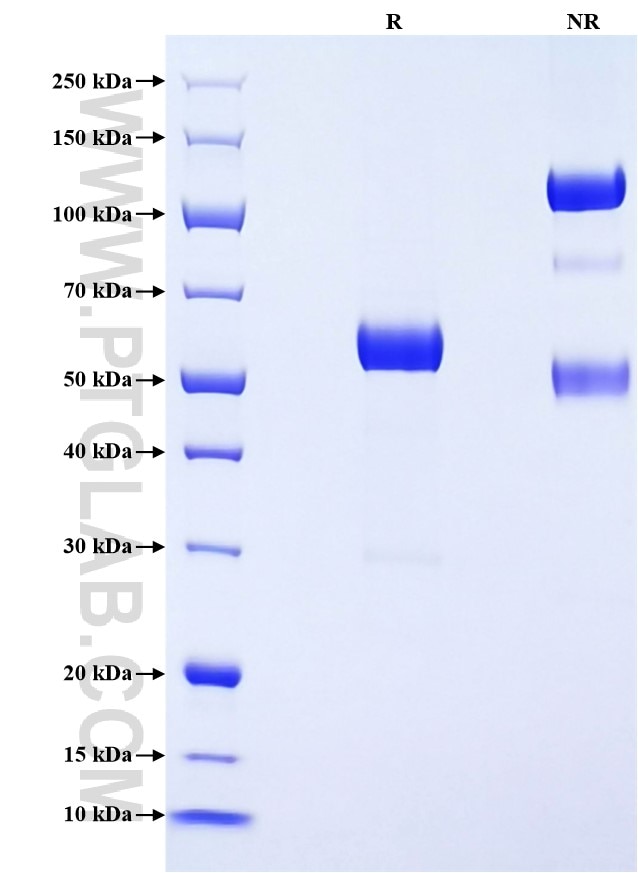Recombinant Mouse CD32B/Fcgr2b protein (rFc Tag)
Species
Mouse
Purity
>90 %, SDS-PAGE
Tag
rFc Tag
Activity
not tested
Cat no : Eg5259
Validation Data Gallery
Product Information
| Purity | >90 %, SDS-PAGE |
| Endotoxin | <0.1 EU/μg protein, LAL method |
| Activity |
Not tested |
| Expression | HEK293-derived Mouse CD32B protein Thr30-Pro210 (Accession# P08101-1) with a rabbit IgG Fc tag at the C-terminus. |
| GeneID | 14130 |
| Accession | P08101-1 |
| PredictedSize | 46.6 kDa |
| SDS-PAGE | 55-65 kDa, reducing (R) conditions |
| Formulation | Lyophilized from 0.22 μm filtered solution in PBS, pH 7.4. Normally 5% trehalose and 5% mannitol are added as protectants before lyophilization. |
| Reconstitution | Briefly centrifuge the tube before opening. Reconstitute at 0.1-0.5 mg/mL in sterile water. |
| Storage Conditions |
It is recommended that the protein be aliquoted for optimal storage. Avoid repeated freeze-thaw cycles.
|
| Shipping | The product is shipped at ambient temperature. Upon receipt, store it immediately at the recommended temperature. |
Background
CD32B, also known as FcgammaRIIb or FCGR2B, is a protein that belongs to the family of Fc receptors. It is a type I transmembrane protein and a member of the immunoglobulin superfamily of low-affinity immunoglobulin gamma Fc receptors. This protein acts as a low-affinity receptor for the Fc region of immunoglobulin gamma complexes. It plays a crucial role in immune responses, particularly in the phagocytosis of immune complexes. CD32B is involved in several processes, including Fc-gamma receptor signaling pathway involved in phagocytosis, negative regulation of B cell receptor signaling pathway, and regulation of dendritic spine maintenance. It is expressed in various cell types, such as B cells, myeloid cells, and is also found on the surface of B cell leukemia/lymphoma cells. The protein is encoded by the FCGR2B gene and is implicated in various diseases, including autoimmune thrombocytopenic purpura, glomerulonephritis, lymphoid leukemia, malaria, and systemic lupus erythematosus.
References:
1.Stopforth RJ. et al. (2016) J Clin Immunol. 36 Suppl 1:88-94. 2.Tutt AL. et al. (2015) J Immunol. 195(11):5503-16. 3.Lim SH. et al. (2011) Blood. 118(9):2530-40.
